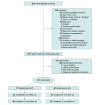Effects of a Diabetes Prevention Program on Type 2 Diabetes Risk Factors and Quality of Life Among Latino Youths With Prediabetes: A Randomized Clinical Trial
- PMID: 36094502
- PMCID: PMC9468887
- DOI: 10.1001/jamanetworkopen.2022.31196
Effects of a Diabetes Prevention Program on Type 2 Diabetes Risk Factors and Quality of Life Among Latino Youths With Prediabetes: A Randomized Clinical Trial
Erratum in
-
Errors in Abstract and Methods.JAMA Netw Open. 2022 Oct 3;5(10):e2239217. doi: 10.1001/jamanetworkopen.2022.39217. JAMA Netw Open. 2022. PMID: 36201215 Free PMC article. No abstract available.
-
Errors in Table 2.JAMA Netw Open. 2025 Jan 2;8(1):e2460689. doi: 10.1001/jamanetworkopen.2024.60689. JAMA Netw Open. 2025. PMID: 39813037 Free PMC article. No abstract available.
Abstract
Importance: Latino youths are disproportionately impacted by prediabetes and type 2 diabetes (T2D). Lifestyle intervention is the first-line approach for preventing or delaying T2D among adults with prediabetes.
Objective: To assess the efficacy of a diabetes prevention program among Latino youths aged 12 to 16 years with prediabetes.
Design, setting, and participants: This 2-group parallel randomized clinical trial with 2:1 randomization assessed a lifestyle intervention against usual care among Latino youths with prediabetes and obesity with 6- and 12-month follow-up. The study was conducted at YMCA facilities in Phoenix, Arizona from May 2016 to March 2020.
Intervention: Participants were randomized to lifestyle intervention (INT) or usual care control (UCC). The 6-month INT included 1 d/wk of nutrition and health education and 3 d/wk of physical activity. UCC included 2 visits with a pediatric endocrinologist and a bilingual, bicultural registered dietitian to discuss diabetes risks and healthy lifestyle changes.
Main outcomes and measures: Insulin sensitivity, glucose tolerance, and weight-specific quality of life (YQOL-W) at 6- and 12-month follow-up.
Results: A total of 117 Latino youths (mean [SD] age, 14 [1] years; 47 [40.1%] girls) were included in the analysis. Overall, 79 were randomized to INT and 38 to UCC. At 6 months, the INT led to significant decreases in mean (SE) 2-hour glucose (baseline: 144 [3] mg/dL; 6 months: 132 [3] mg/dL; P = .002) and increases in mean (SE) insulin sensitivity (baseline: 1.9 [0.2]; 6 months: 2.6 [0.3]; P = .001) and YQOL-W (baseline: 75 [2]; 6 months: 80 [2]; P = .006), but these changes were not significantly different from UCC (2-hour glucose: mean difference, -7.2 mg/dL; 95% CI, -19.7 to 5.3 mg/dL; P for interaction = .26; insulin sensitivity: mean difference, 0.1; 95% CI, -0.7 to 0.9; P for interaction = .79; YQOL-W: mean difference, 6.3; 95% CI, -1.1 to 13.7; P for interaction = .10, respectively). Both INT (mean [SE], -15 mg/dL [4.9]; P = .002) and UCC (mean [SE], -15 mg/dL [5.4]; P = .005) had significant 12-month reductions in 2-hour glucose that did not differ significantly from each other (mean difference, -0.3; 95% CI, -14.5 to 14.1 mg/dL; P for interaction = .97). At 12 months, changes in mean (SE) insulin sensitivity in INT (baseline: 1.9 [0.2]; 12 months: 2.3 [0.2]; P = .06) and UCC (baseline: 1.9 [0.3]; 12 months: 2.0 [0.2]; P = .70) were not significantly different (mean difference, 0.3; 95% CI, -0.4 to 1.0; P for interaction = .37). At 12 months, YQOL-W was significantly increased in INT (basline: 75 [2]; 12 months: 82 [2]; P < .001) vs UCC (mean difference, 8.5; 95% CI, 0.8 to 16.2; P for interaction = .03).
Conclusions and relevance: In this randomized clinical trial, both INT and UCC led to similar changes in T2D risk factors among Latino youths with diabetes; however, YQOL-W was improved in INT compared with UCC. Diabetes prevention interventions that are effective in adults also appeared to be effective in high risk youths.
Trial registration: ClinicalTrials.gov Identifier: NCT02615353.
Conflict of interest statement
Figures


References
-
- Lawrence JM, Reynolds K, Saydah SH, et al. ; SEARCH for Diabetes in Youth Study Group; SEARCH for Diabetes in Youth Study Group . Demographic correlates of short-term mortality among youth and young adults with youth-onset diabetes diagnosed from 2002 to 2015: the SEARCH for Diabetes in Youth Study. Diabetes Care. 2021;44(12):2691-2698. doi:10.2337/dc21-0728 - DOI - PMC - PubMed

